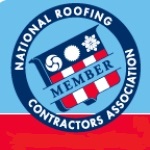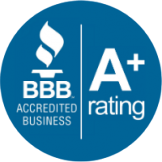Long Island Roofing: Article About Getting Your Roof Ready For Solar
Solar panels require specialized mounting hardware to remain stable after being placed on your roof. These mounts come in a variety of forms, and each has its own unique structural advantages, but some hardware requires additional prep work prior to installation.
Long Island NY roofing FAQ: Can I install solar panels on any open section of south-facing roof?Before installing your panels, make sure to consult with a licensed roof specialist and your solar panel vendor. Roofing professionals must inspect your target area beforehand to ensure that it has the necessary structural strength needed to keep your panels completely immobile. Roofers should also be on call after the job is done; their post-installation inspections ensure that the added weight won't cause problems like sag or leaks later on.

As part of the push to go green, more and more homeowners and business facility managers are considering installing solar panels on their roofs. While the appeal of free or reduced-cost power is certainly understandable, it's important not to jump the gun. Just like any other major building modification, solar panel installations must adhere to a number of requirements to ensure that the end product looks good and functions properly.
Solar panels are deceptively heavy. Although each type of module has its own specific weight characteristics, the silicon, metal and other materials that these devices are composed of account for significant mass. For this reason, almost all solar installations require some kind of panel mounts that distribute their weight evenly and prevent the flat planes of your Long Island roofing from sagging over time.
Mounts also serve another important purpose: Solar panel technology requires a stable installation to harvest the most photon energy. Tiny vibrations caused by nearby highway traffic or weather patterns that change the local air pressure and temperature can reduce the efficacy of your solar devices by causing subtle variations in the angles between panel surfaces and the sun. While these factors are generally taken into account by manufacturers, proper mounts can help reduce such effects.
On angled roofs, solar panel mounts must be affixed to the tresses beneath the roof plane. These beams are designed to distribute load, so they're usually ideal for new panels.
A roofing professional from Long Island NY can answer any question you have about flat roofs or architectural roofing.
Nonetheless, roofing professionals should examine these beams from inside your attic or crawlspaces before your installation begins in order to take care of rotted spots or other existing structural defects.
On flat roofs, roofers usually have to make additional modifications to create a good angle for solar power. The flush mounts used on angled roofs are generally replaced with poles or other support structures, and some even include motors that track the sun as it travels through the sky. These options are heavier than regular hardware, so they should be handled with due diligence.
Most solar panel installations don't take too long to complete, but that doesn't mean you can just have the panels placed and then forget about them. Hire a professional roofer who can check seals for watertightness immediately after any addition that penetrates your roof.
Because most roofs are formed using layered construction techniques, improper seals can contribute to the spread of moisture, and water may travel over large areas as it flows between barriers and laminates. For this reason, many professionals recommend additional inspections a few months after the initial installation. These checks don't require too much time or effort, but they're essential steps in outfitting your building with a solar installation that you can enjoy for years to come.









